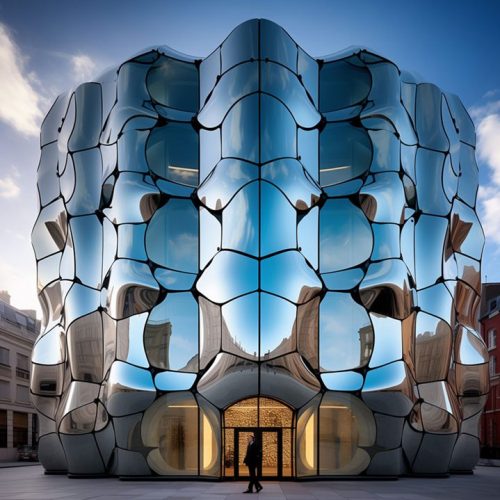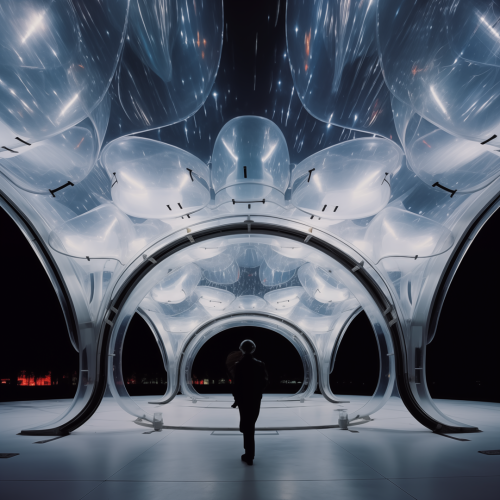“Words have great power: they give shape to thoughts”.
Article published on 'Parametric Architecture

“Words have great power: they give shape to thoughts”.
I have long known this phrase from the psychologist Jerome Bruner, founder of cultural psychology. This thought arises within his theory of narration, a different area, but I found them so exemplary in describing the way we relate to AI. A prompt, a sequence of elementary words, which question an intelligence, which generates images, more precisely, again quoting Bruner, “build visions” and take “form”. Singular analogy.
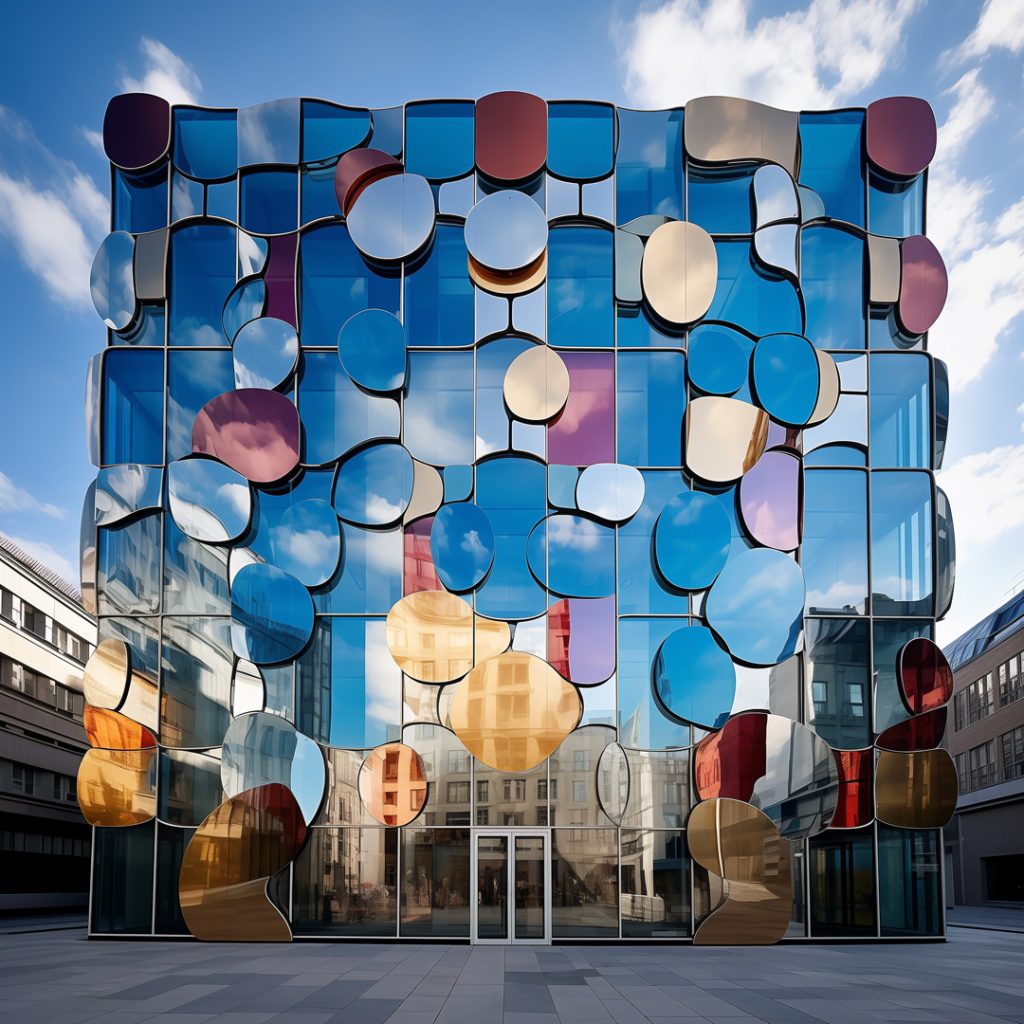
Seeing the first images generated by Midjourney’s artificial intelligence online, I had the immediate desire to understand. The first approach to AI, for those like me who frequent parametric design, was disorienting. There is not the rigor of interfaces of mathematical and parametric software, but it is an environment more similar to that of a social network. Seeing inside Midjorney, the generation of images, graphics, design and architecture projects, which generally require profound knowledge, generated with a simple prompt, with a sentence, initially deeply disturbed me.
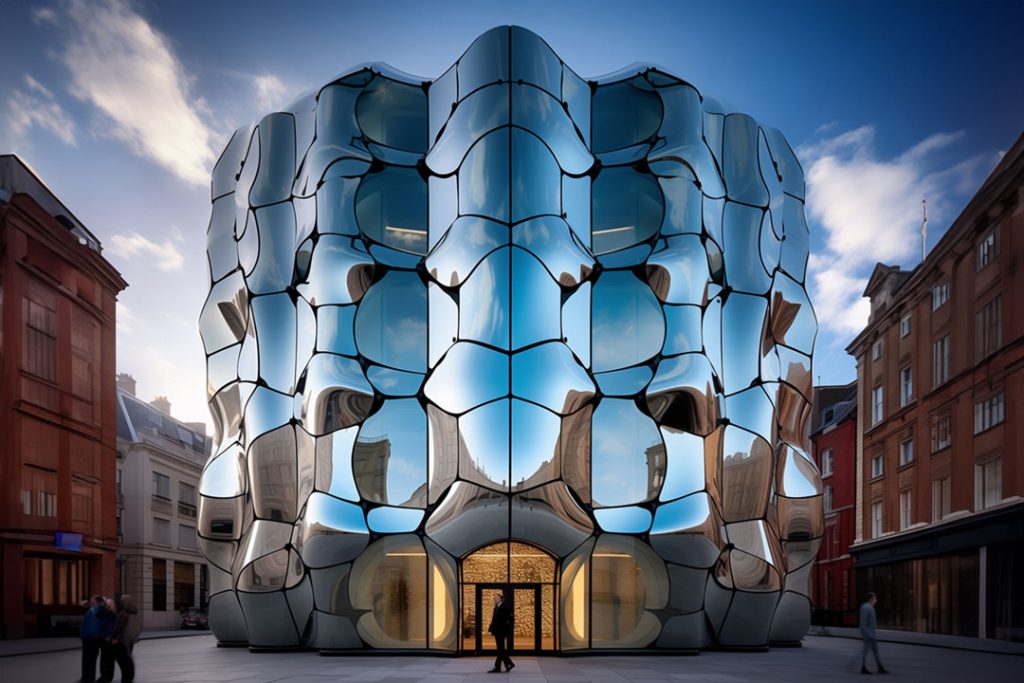
In an instant I saw an abnormal potential. I was disoriented. I thought: everything will be different. AI talks to everyone, even fools, and perhaps it will put them in a position to compete with those who have dedicated a life to study, to a capacity for vision, to planning. Yes, of course, those generated by Midjorney are just images. Now it is unable to generate the relevant three-dimensional model. But for how much longer? There are already some first attempts in this direction. Considering the impressive development capacity of AI, perhaps it will take a few years, or perhaps a few months. Once the 3D model has been generated, it will be able to control in an integrated way, engineering aspects such as structure, energy management, costs, and so on. In other words he will take charge of the entire process. The AI is there, at the top. It is at the peak of the process pyramid, it is the creative moment. The best place has been chosen, and when it is connected to the underlying dimension of data control, of BIM, it will be a total revolution. I closed everything and looked the other way for a while.
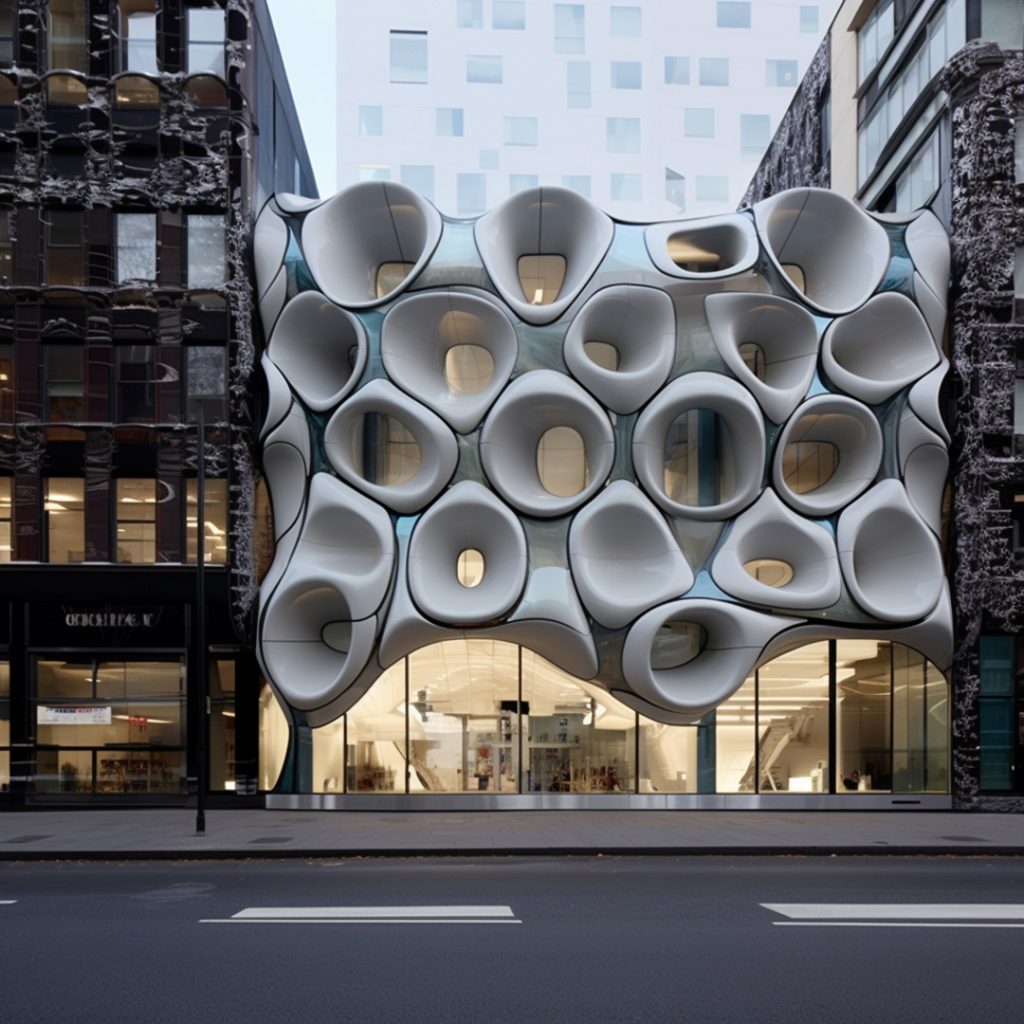
As time passed, I read very severe judgments which were countered by great enthusiasm. In Italy, some architects even speak of artificial stupidity; certainly, for better or for worse it is a topic that is becoming more and more central and on which tempers often flare up.
After some time, Bruner’s beautiful phrase came back to me, the analogy of the power of words to generate visions and forms. In reality, I had spent very little time understanding AI. An interest in building my own personal evaluation, without preconceptions, is rekindled in me. I decide to delve deeper into the study of AI. I put one condition before any judgment: the need to frequent it. The word “attendance” implies the need to dedicate time to getting to know it in depth. I started, trying to implement it in my daily work, designing as an architect. At the beginning, compared to specific and stringent requests on how to design some spaces, the results proved disappointing. The answers were often exaggerated, off topic, and not as exciting as the first approaches.
Only with patience, and dedicating a lot of time, did I understand what the most effective working methods and prompts were. AI is characterized by the ability to give a huge amount of answers very quickly. Therefore it is important to have an attitude to control this mass of data. We need to build a statistical approach, to understand among the countless possibilities, which path will be the most effective for subsequent iterations. It is precisely this continuous “iteration”, i.e. indicating stringent requests, applying a logic of continuous approximation to the final result, which turns out to be the right key to obtaining an effective “collaboration” with AI.

The human mind is generally able to work with a limited number of information, while AI, precisely in its development phase (the most important during which it “learns” the distribution of the data it must develop) is trained to deal with a large amount of data and knowledge, sinking his knowledge into the gigantic world of data made available by the network. In this sense we are fundamentally different. The philosopher Friedrich Nietzsche stated: “one should know nothing more about a thing than one can use it creatively”. That is, the human mind is capable of being creative with an extremely smaller amount of data than that available and necessary to AI. We must strive to simplify its intrinsic complexity and manage its bulimic productivity. I believe that good attendance is based on the right amount of iteration time, which stimulates our creativity and does not compromise it, avoiding being overwhelmed by the infinite quantity of solutions it offers.
The AI tries to follow us, to anticipate us, in the continuous relationship that is built in the various prompts. This ability to follow you and anticipate you is a feature already present in other search algorithms, such as Google or Pinterest, which are able to intuit, when reading the user’s history, their tastes, and to propose texts or images, potentially aesthetic solutions more welcome. However, they refer to images or texts already present on the internet. AI seems, if well interrogated, to introduce the ability to give new answers.

But is it always like this? I don’t think so, I have the feeling that this ability of AI is not immediate at the moment. In other words, AI talks to everyone, but is capable of high and original iterations, generally under certain conditions, or by interacting well with other intelligences.
The various projects that I have published on Instagram tend to trace a visible path that tends to confirm this thesis. Some of these projects developed with iteration with artificial intelligence will be realized. Most people try to indicate possible scenarios. I am experimenting, as an architect, with the possibility of designing with the “verb” and no longer just with the “sign”. The importance of experimenting and publishing continuously, sharing the results, is a fundamental element of research. The quantity of works processed indicates a research direction, which provides a longitudinal reading of a possible collaboration with AI. These projects indicate the limits and potential of a constantly evolving reality. Individual posts, isolated, don’t make much sense in terms of understanding what’s happening. Both to express favorable opinions and for severe criticism.
A social network like Instagram is currently the ideal place for this comparison and sharing, capable of managing a large amount of data and images; a dynamic magazine, open to all, in which the limits and potential of AI are tested in the field of artistic creativity, design and architecture.
Generally, the quality of the various images visible online is not always very high. Indeed Midjourney over time tends to generate a boring aesthetic and is often exaggerated. But I believe that the responsibility does not lie entirely with AI, but largely depends on the attitude of those who question the artificial intelligence.

During this meeting with the AI I asked myself various questions. Is Midjourney’s intelligence one and central? Do I always interact with the same person or a different one, or even with multiple people simultaneously?
The “godfather” of AI, Geoffrey Hinton, talks about it as if it were an intelligence linked indivisibly to an entire community, not to a single subject, as we normally imagine. Geoffrey Hinton says, “It’s like you have 10,000 people and every time each of them learned something, everyone automatically knows it.”
Therefore it is as if the knowledge and intelligence of a single scientist were fully shareable by the remaining part of humanity who in turn instantly shares his knowledge. The dizzying growth capacity of AI is clear. And again: AI is the mind of a young mathematician or an artist; of a child prodigy or conscious adult.
Some questions are scary and even seem naive, but we just have to relate to this new reality, which in other fields, such as medicine, seems to be an irreplaceable support in clinical practice, risk assessment and diagnostics, with great benefits for many.

The fears in the artistic and creative fields are greater and very different. For the American philosopher Noam Chomsky, AI is “the greatest theft of intellectual property; it is plagiarism software because it doesn’t create anything, but copies existing works, by existing artists, altering them enough to escape copyright laws.” In fact it must be said that all AIs have in common an initial “training” phase which then determines the goodness of its algorithm. Midjourney has raised more than a few criticisms, as he was trained on artists’ works protected by copyright, which he made and which he reproduces, in its various declinations, without problems. But this position of the philosopher Noam Chomsky is not entirely convincing. There has always been constant contamination and stories of plagiarism in the fields of art, literature and science, which is then the basis of subsequent advances and original progress.
There is a nice article by the philosopher Francasco D’isa entitled “Plagiarism or inspirations”. It reminds us that the Latin poet Martial already complained about those who imitated his verses. Giordano Bruno, during some of his lectures at Oxford, was accused of plagiarism, as he reported almost entirely works by Marsilio Ficino in his writings. In the Overture to the Magic Flute by the great Mozart, there are “very clear references” to themes by Cimarosa and Clementi. And so on.

In conclusion, what I have briefly represented up to now refers to AI, in particular to Midjourney, which is the simplest form of artificial intelligence to use for a less specialized range of users, from an IT point of view, such as architects, designers and graphs. But new AIs are becoming available, which have different variables even if they are more complex to manage. We are entering a period of great conceptual fluidity.
Stable Diffusion for example is open source, its code and weights have been released publicly. It’s free and very powerful. Its basic architecture was developed by the Ludwig Maximilian University of Munich. He would certainly have pleased Condorcet, “who in his Fragments sur la liberté de la presse (1776) maintained that a work, as a vector of ideas, should not be considered private”. A very first intuition of open source. But then the concept of intellectual rights of the Enlightenment philosopher Diderot prevailed and so the Le Chapelier law was enacted on 13 January 1791 to guarantee copyright.

Midjourney’s code, on the other hand, is proprietary, although many think that it is in fact based on the Stable Diffusion models. Midjourney can only be accessed via the web and is essentially paid. Stable Diffusion can be downloaded and installed on your PC and is really free.
I have already installed this new AI with a procedure that is not at all obvious and not within everyone’s reach. I don’t want to dwell on describing its complexity, its potential, which I find incredible in “expert hands”. Instead, I want to show you just one detail. I launched the first line of prompts to generate the first image with Stable Diffusion, but beforehand I disconnected the cable of my PC from the network. The AI worked, returning its realistic and incredible image, responding perfectly to the parameters entered. I was deeply impressed by it. So there is not just an AI, like Midjourney, located in a remote and very powerful server, and to be interrogated via the internet. Now the “everything” is in my car, on my desk, in my architect’s office. I turned off the PC and I must say that from that moment on I looked at it differently. I certainly don’t believe that my computer has feelings, or that it is sentient as Blake Lemoine fired from Google claimed, but my PC has certainly become something else. What? I don’t know.
For more resources: https://www.instagram.com/massimorussoarchitetture/
Massimo Russo’s projects based on iterations with artificial intelligence.
Artificial intelligence
methodologies and new scenarios

